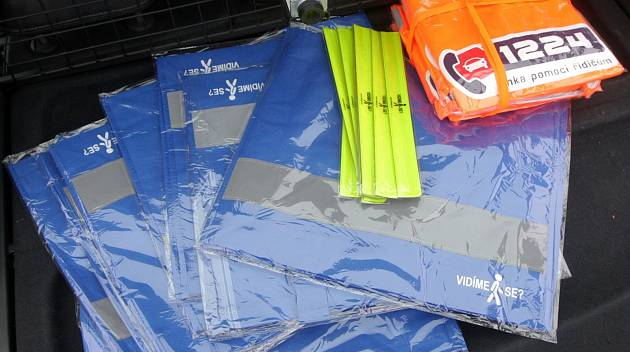If you follow the road outside the village, you need to have reflective elements on your clothes, such as a sleeve belt or reflective vest. If not, you face up to two thousand fines. In administrative proceedings, penalties range from CZK 1,500 to 2,500. An amendment to the Road Traffic Act has been in force since Saturday, which obliges pedestrians to wear reflective elements.
The so-called non-motorized road users are the most vulnerable to road traffic. Pedestrians, in particular, should ensure that they are well visible at a sufficient distance and that drivers can avoid them in time. But the reality is that people often wear dark clothes on the roads. The chauffeur often sees them at the last minute and some clashes have fatal consequences for pedestrians.
Reflective elements are intended to increase their safety. The more they wear, the better. Generally, police officers recommend at least two. One placed on the hand and the other on the leg, especially on the right side, which is towards the road. “Illuminated flashlight or mobile phone are not considered to be a reflective element, because light from them is not visible from all sides,” said Kladno police spokeswoman Michaela Novakova.
“Police officers have been involved in the prevention of visibility of road users, especially pedestrians, for example in the framework of the project Seeing You. Therefore, their progress, alerting pedestrians to the use of reflective elements, nothing fundamental changes. It is only that if pedestrians do not have them, it is contrary to the law, “said Novakova.
Police officers can already fine pedestrians, but it is possible to negotiate. Over time, police patrols will be much stricter.
“Certainly we will not start organizing a pedestrian hunt without reflective elements. Rather, we will explain to them initially that it is about the safety of theirs, but also of other road users, “the spokeswoman said.
Many tests have shown that when a pedestrian moves in dark clothing, he is visible to the driver at only 18 meters, in white clothes to 55 meters and if his clothing is accompanied by a reflective sign which made of reflective heat transfer vinyl, the driver sees it at 200 meters.
In addition to the obligation for pedestrians to wear reflective material elements, the amendment also obliges drivers to clean the car from snow and ice or allows municipalities to ban segway operations.

